Bounce
This is the angle of the sole measured against a horizontal line I.e. the ground, when the club is in the address position and the shaft is vertical.
The more bounce there is, the higher the leading edge is off the ground when the club is held in its address position. It’s measured in degrees and really matters most in higher lofted clubs. Every iron you carry has ‘bounce’ but it is mainly talked about offered in different amounts in the higher lofted clubs I.e. Pitching, Sand, Gap and Lob wedges to suit your course conditions and the way you play your shots.
The more bounce there is, the more the bottom of the club acts like the front of a surf board (slightly raised) to prevent the club from digging into the ground or the sand.
That “thump” you hear when a pro on TV hits a sand shot is the sound of the bounce on the sole of the club making the first contact with the sand and not the leading edge digging in.
Grind
“Grind is the manipulation of removal of material from the sole of your golf club to improve it visually behind the ball and more so to improve contact with the turf.”
Once you move a wedge from its normal address position in most occasions, opening the blade presents more bounce, closing it down less bounce.
To alter and fine-tune that dynamic, we come to the “grind”. Here we have to address two more terms: radius and camber. Radius is the gradual curve of the leading edge as you look down at the head in the address position. Camber is the curve of the sole from the leading to trailing edge.
Many “players” irons in the past like old Hogans and MacGregors were designed with a very straight leading edge and sole. Today, most irons have a slight radius that makes them a little friendlier out of rough and tight lies.
When it comes to camber, a lot of pros will grind a little off the leading and trailing edges of iron soles to create a “rounder” shape that cuts down on drag and reduces bounce.
Grinding the sole of wedges has become something of an art form that people like Bob Vokey at Titleist & Anthony Taranto at Callaway have perfected.
The grind options you have available on your wedges these days are huge. For example Titleist offer these in letter form to distinguish them (I’ve added the benefit to each one)…
F – Straight leading edge and sole for visual and turf interaction like your other irons in the bag.
S – Neutral turf conditions, for the player that takes divots with his wedges. Offers greater forgiveness.
M – Ideal for the most universal and playability, skilled golfers and varying turf conditions.
D – Higher bounce and width of sole for forgiveness and use in bunkers, thicker grass, softer turf conditions.
L – Ideal for firm turf conditions and sweeper swing styles.
K – Widest sole available from Titleist, high bounce ideal for bunker shots and forgivness from those that struggle with too much turf interaction.
“Wedges need to be versatile and every player is different. It’s never one size fits all for wedges. That’s why we have many grind options.” – Bob Vokey

Conclusion
All wedge manufacturers are offering varying bounce and grind options. The tough part is finding out what is best for yourself. Points that I would consider that should influence your decision are where you play and the turf you are hitting from, costal golf is very different to parkland or if you’re playing somewhere that holds water. What your skill level is should influence the style to offer forgiveness if needed. How you play and see yourself executing your short game shots, choosing a wedge that is created for golfers that sweep their wedge shots when you are a divot taker is not an ideal combination.
Wedge Fitting
If you are interested in finding the correct set up we offer a wedge fitting service…
With the use of Trackman 4 we can look in to your swing & ball flight characteristics on Trackman like your Angle of attack, dynamic loft, launch angle and spin rates. This allows us to correctly choose loft and bounce. To ascertain the correct grind we like to watch some of your short game shots and ability from different lies, conditions and even bunker shots. This gives you the opportunity to match your technique to the type of wedge you should be using to lower your scores.
Why guess when you can measure?
Rob Wilkinson
PGA Professional
rob.nfgc@btinternet.com



